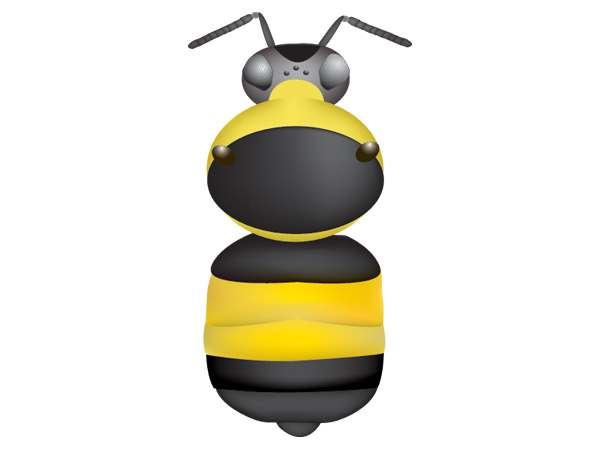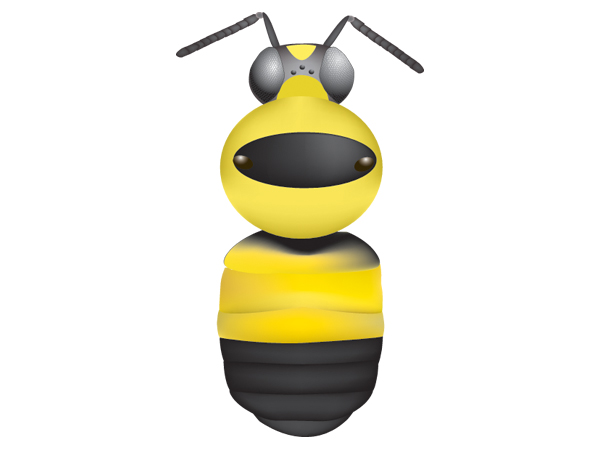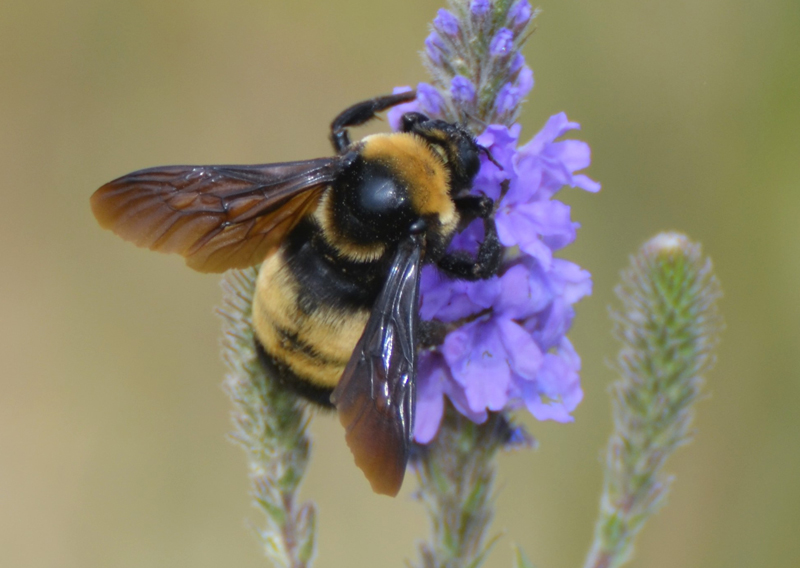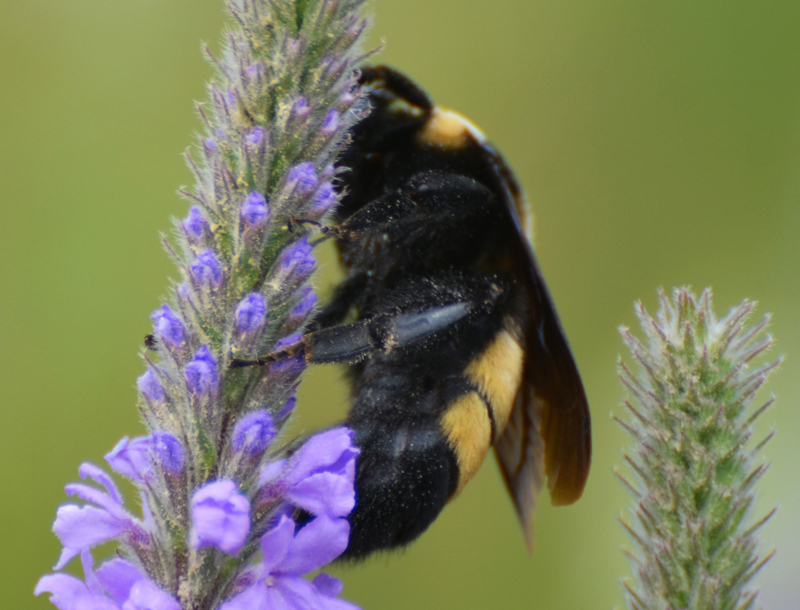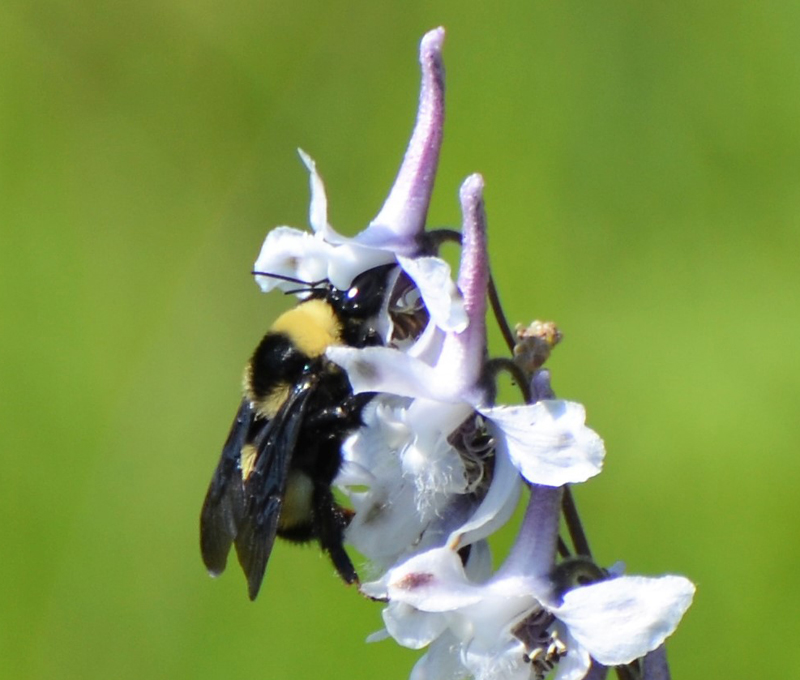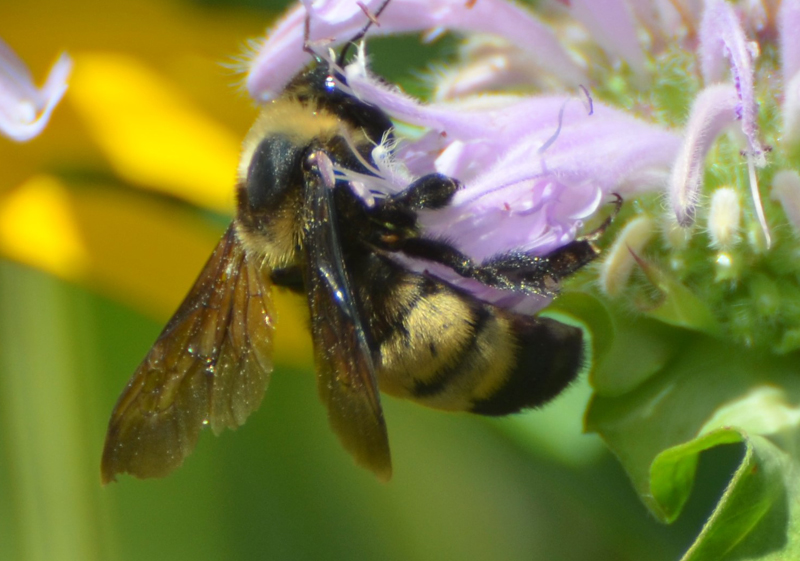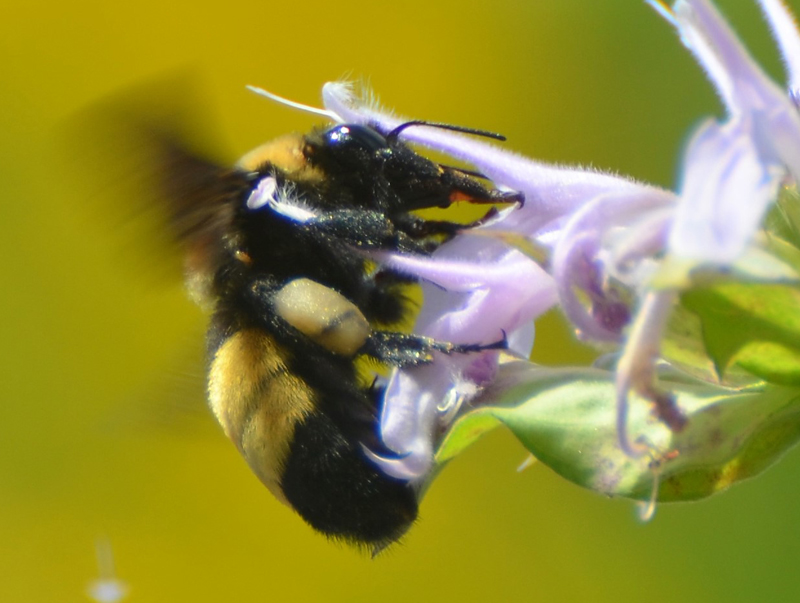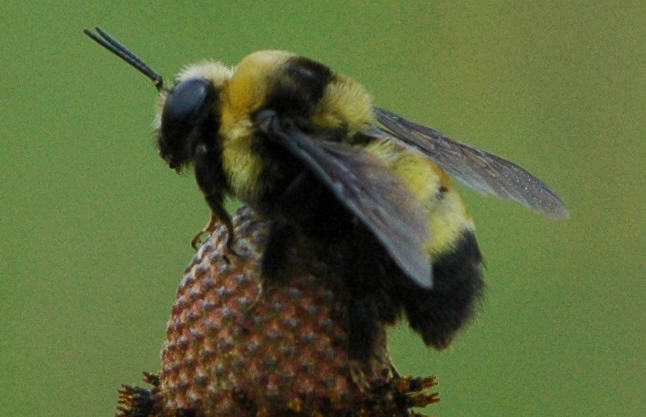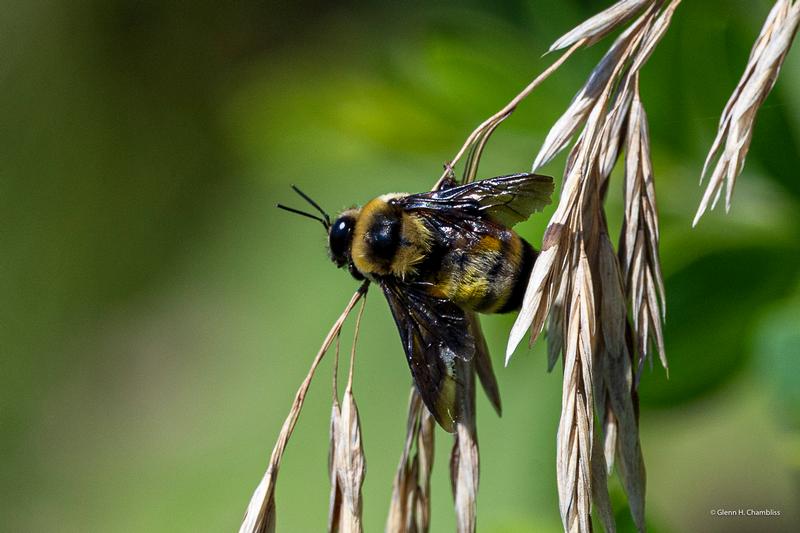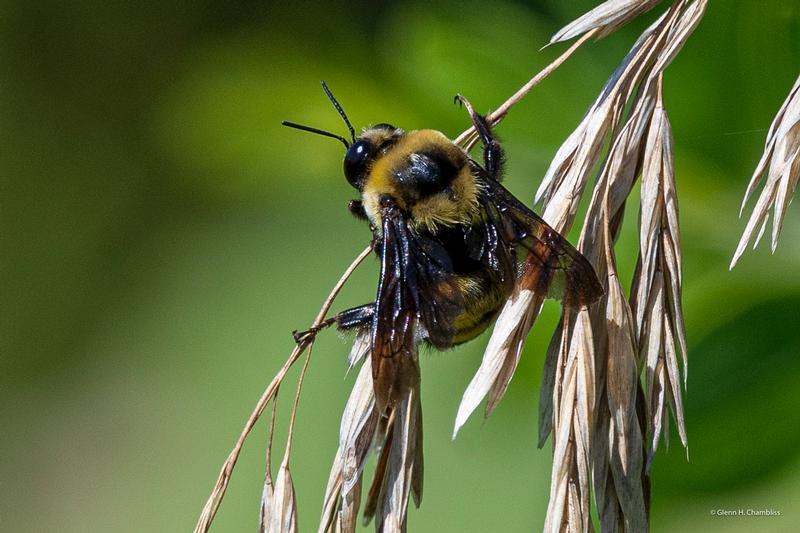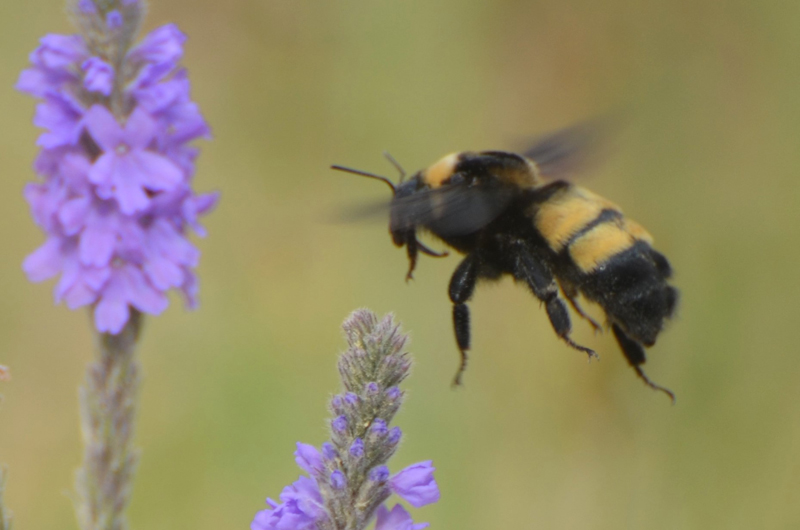
Status-Global/State:
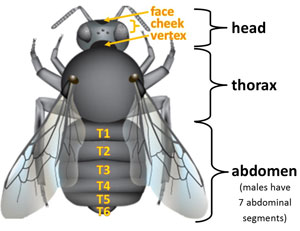
Identification:
- Worker – Face black and vertex yellow. Thorax mostly black especially at the back, but with a small strip of yellow near the abdomen and in front of the wingpads. Abdominal segments T1 black with occasionally some yellow on the sides, T2-3 yellow, T4-6 black.
- Queen/gyne – Similar to workers, but are larger and appear earlier in the season.
- Male – Face and vertex yellow. Thorax yellow with a black band between the wingpads. Abdominal segment T1 often yellow with some black near the thorax, T2-3 yellow, and T4-7 black, occasionally some yellow intermixed on T4.
- Other distinguishing features – Large bee with a long cheek/face, short/even hair, and dark wings. Males have large bulgy eyes.
Similar Wisconsin Species:
Similar bumble bee species in Wisconsin are American bumble bee (B. pensylvanicus) and yellowbanded bumble bee (B. terricola) (Colla et al. 2011, Williams et al. 2014).
Description of Habitat/Range:
Known habitats include grasslands, open farmlands and old fields (Williams et al. 2014). Nests are typically small and are on the ground surface (Hatfield et al. 2015).
Nectar Plants
The black and gold is a long-tongued species (Williams et al. 2014). Nectar plants include Carduus, Cirsium (thistles), Dalea (prairie clover), Delphinium, Dipsacus, Echinacea (purple coneflowers), Eupatorium (Joe-pye weed), Hypericum (St. John's wort), Monarda (bee balms), Penstemon, Solanum (nightshades and relatives), Trifolium (clovers) and Vicia (vetches) (Williams et al. 2014, Colla et al. 2011).
Data from verified B3 observations [updated 2/28/2024].
Flight Season:
Known to emerge late. In Wisconsin, observations have been reported between May and October.
Literature Cited:
Colla, S., Richardson, L. and Williams, P. (2011) Bumble Bees of the Eastern United States. A product of the USDA Forest Service and the Pollinator Partnership with funding from the National Fish and Wildlife Foundation.
Hatfield, R., Jepsen, S., Thorp, R., Richardson, L. & Colla, S. 2015. Bombus auricomus. The IUCN Red List of Threatened Species 2015: e.T44936424A46440186.
Williams, P.H., Thorp, R.W., Richardson, L.L. and Colla, S.R. (2014) The Bumble bees of North America: An Identification guide. Princeton University Press, Princeton.
